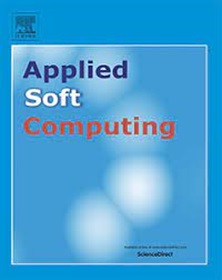Basic emotion detection accuracy using artificial intelligence approaches in facial emotions recognition system: A systematic review
IF 7.2
1区 计算机科学
Q1 COMPUTER SCIENCE, ARTIFICIAL INTELLIGENCE
引用次数: 0
Abstract
Facial emotion recognition (FER) systems are pivotal in advancing human communication by interpreting emotions such as happiness, sadness, anger, fear, surprise, and disgust through artificial intelligence (AI). This systematic review examines the accuracy of detecting basic emotions, evaluates the features, algorithms, and datasets used in FER systems, and proposes a taxonomy for their integration into healthcare. A comprehensive search of six databases, covering publications from January 1990 to March 2023, identified 4073 articles, with 35 studies meeting inclusion criteria.
The review revealed that happiness and surprise achieved the highest mean detection accuracies (96.42 % and 96.32 %, respectively), whereas anger and disgust exhibited lower accuracies (91.68 % and 93.71 %, respectively). Fear and sadness had a mean accuracy of 93.87 %. Among AI algorithms, GFFNN demonstrated the highest accuracy (100 %), followed by KNN (97.99 %) and DDBNN (97.77 %). CNN and SVM were the most commonly used algorithms, showing competitive accuracies. The CK+ dataset, while extensively employed, demonstrated a mean accuracy of 96.08 %, lower than RAVDESS, Oulu-CASIA, and other databases.
This taxonomy provides insights into FER systems' capabilities to enhance patient care by identifying emotional states, pain levels, and overall well-being. Future research should adopt diverse datasets and advanced algorithms to improve FER accuracy, enabling robust integration of these systems into healthcare practices.
求助全文
约1分钟内获得全文
求助全文
来源期刊

Applied Soft Computing
工程技术-计算机:跨学科应用
CiteScore
15.80
自引率
6.90%
发文量
874
审稿时长
10.9 months
期刊介绍:
Applied Soft Computing is an international journal promoting an integrated view of soft computing to solve real life problems.The focus is to publish the highest quality research in application and convergence of the areas of Fuzzy Logic, Neural Networks, Evolutionary Computing, Rough Sets and other similar techniques to address real world complexities.
Applied Soft Computing is a rolling publication: articles are published as soon as the editor-in-chief has accepted them. Therefore, the web site will continuously be updated with new articles and the publication time will be short.
 求助内容:
求助内容: 应助结果提醒方式:
应助结果提醒方式:


